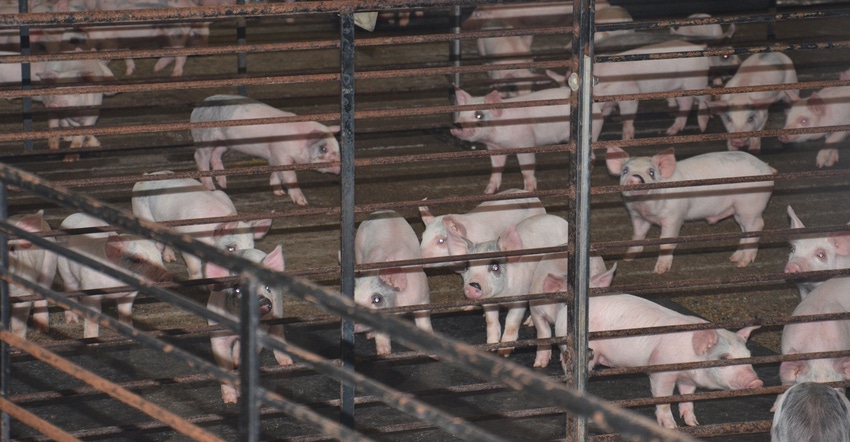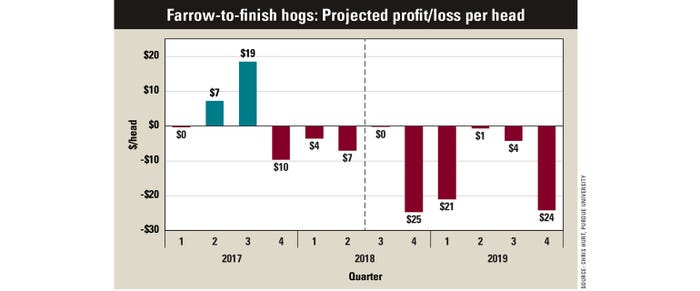June 6, 2018

By Chris Hurt
Some say, “Ignorance is bliss!” I guess that means you can’t worry about things you don’t know about. I’m going to throw bliss out the window and tell pork producers there is something to worry about.
The pork industry is facing a long stretch of losses that began in late 2017 and extends for as far as the current outlook can see. By my estimates, farrow-to-finish operations lost from $4 to $11 per head in the last three quarters.
Looking forward, the situation gets worse. Returns are expected to be close to breakeven this summer before collapsing in the final quarter this fall through the first quarter of 2019. My expectation is that losses will average about $23 per head for this six-month period.
The losses are a result of lower hog prices and a pickup in costs. Lower prices are primarily a result of the continued buildup in pork production plus large supplies of beef and poultry. Higher costs are everywhere on hog farms. Feed costs are higher due to weather problems in South America and to drought conditions in the central and southern Great Plains. Energy costs are up sharply. Interest rates are continuing to rise, and labor costs are higher due to the strong U.S. job market.

Pork production has expanded by nearly 4% this year, and is anticipated to grow by 2% to 3% in 2019. Even though pork demand has also been growing, supplies are keeping downward pressure on prices. Carcass prices averaged about $66 per cwt last year but will be $2 lower this year. For 2019, early estimates are that prices will be about the same, but costs will rise and widen losses.
Losses for average-cost farrow-to-finish operations are expected to be near $9 per head this year and $12 per head for calendar-year 2019.
Weather the storm
Hog producers don’t like to hear such a negative outlook, but there is some value in knowing that tough times may be coming. Managers can sometimes make adjustments that reduce the impacts of a downturn. Pork producers can use this time to examine their costs and production efficiencies.
• Get your financial house in order now to prepare for the downturn.
• Know what your costs are. Make every effort to reduce those costs, looking at both the prices of inputs and the volume of inputs.
• Strive to increase efficiency. This tends to drive cost per hundredweight lower.
• Watch for opportunities to set forward prices above costs of production through forward-contracting or the use of futures markets.
For now, it appears production is going to be too high to provide profitable prices. The industry needs to stop sow expansion. Producers also need to keep informing politicians of the importance of keeping our export markets open with minimum trade restrictions.
Hurt is a Purdue University Extension agricultural economist. He writes from West Lafayette, Ind.
You May Also Like




